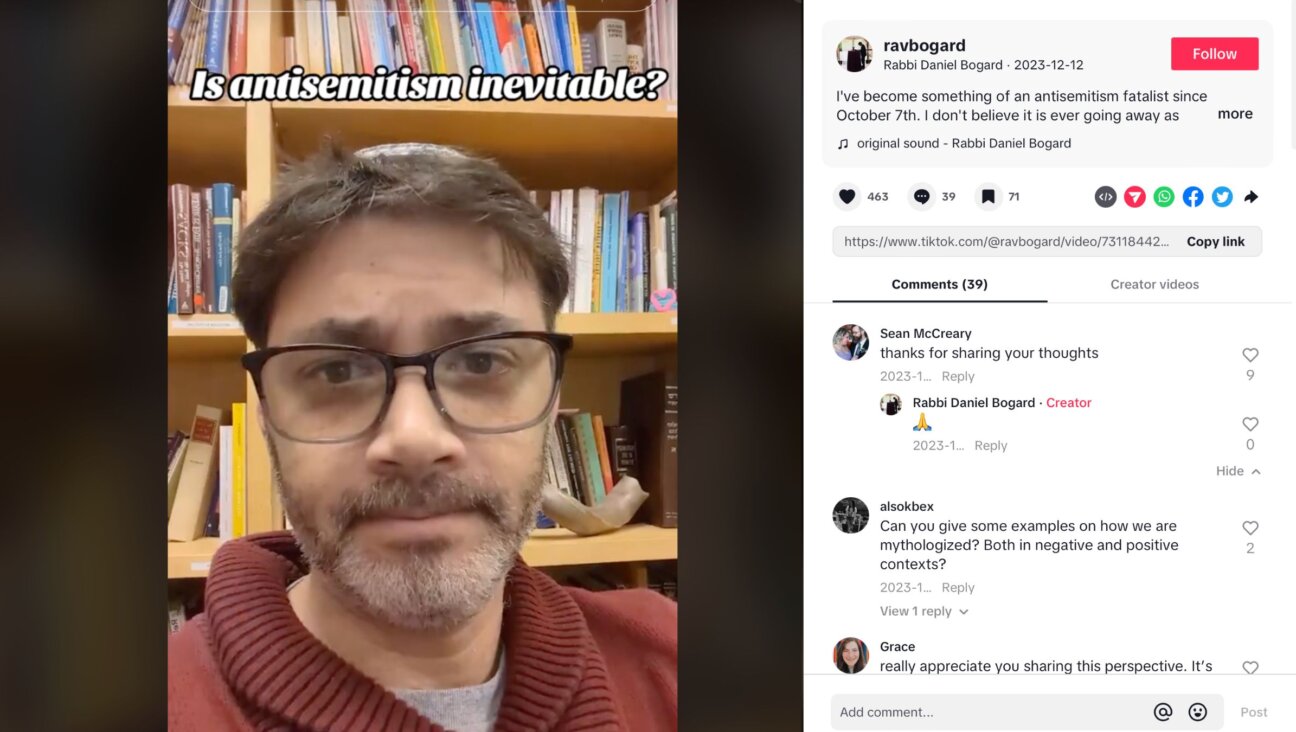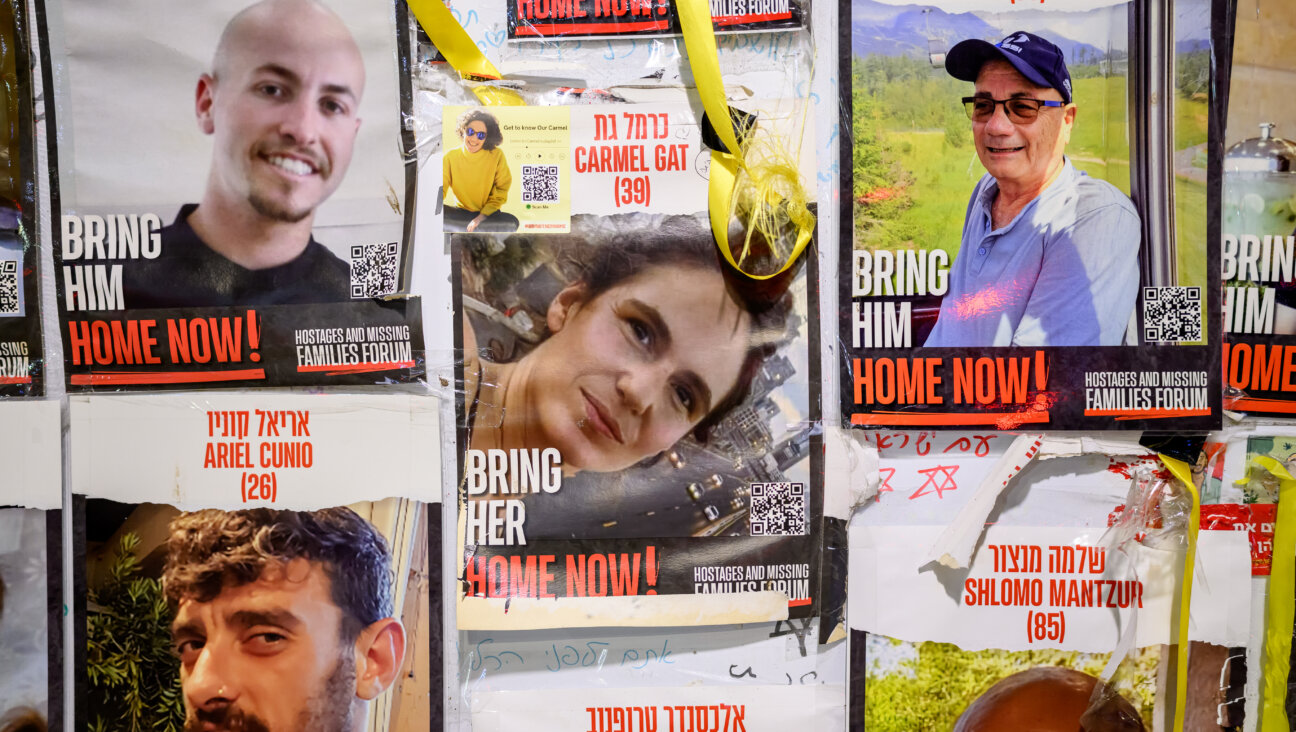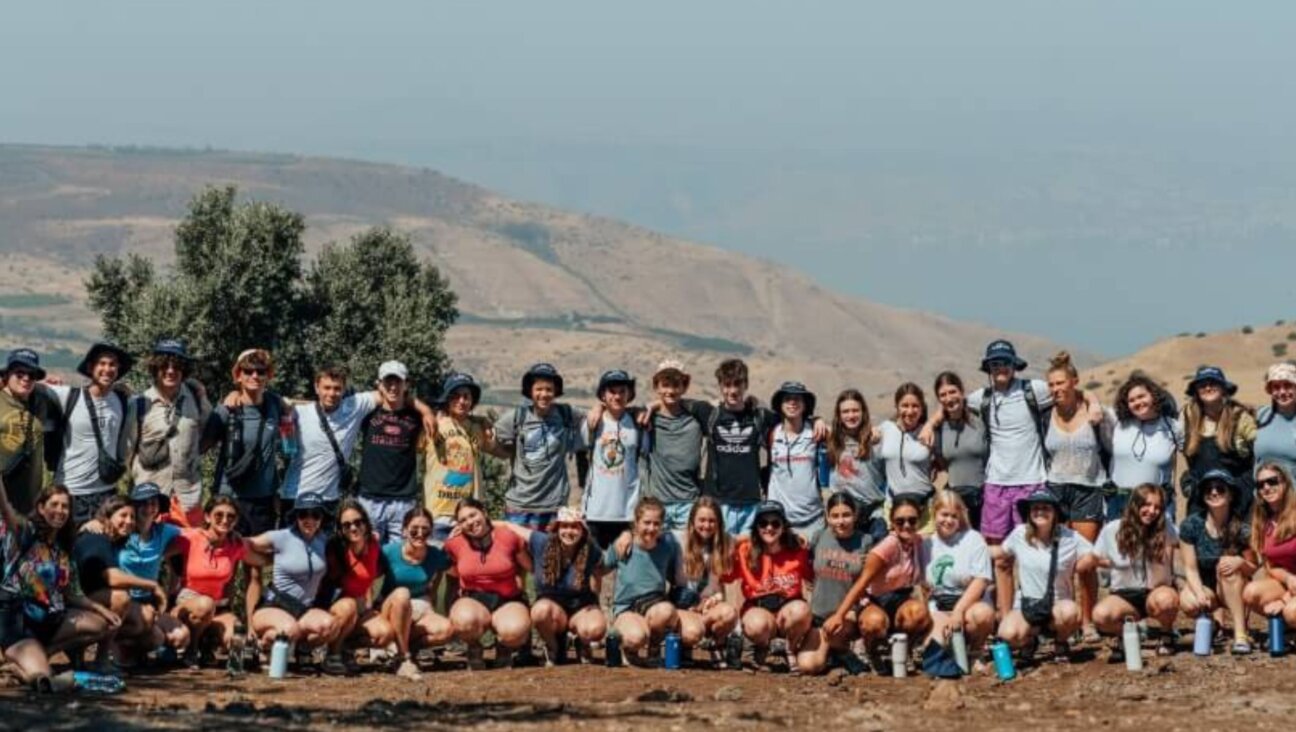EXCLUSIVE: New Archaeology Shows ‘Refugee Camp,’ Not Just Rebels, Atop Masada

Image by Nikki Casey
Tour guides leading thousands of visitors to Masada each year follow a similar routine: Where Roman troops breached the walls, they retell Josephus Flavius’s account of how a group of obsessive, fanatical Jewish rebels refused to concede to servitude or slaughter, and committed suicide instead.
For decades, archaeology at the site has been calling the story of the suicide, so central to Israel’s national myth, into question. Now new discoveries may force a revision of the notion that the group atop the fort was much more diverse than the heroic band of brigands celebrated by the cherished story.
“We’re actually excavating a refugee camp,” said Guy Stiebel, the archaeologist leading excavations carried out earlier this year by Tel Aviv University. Masada’s inhabitants during the seven years of the revolt were “a sort of microcosm of Judaea back then,” comprising refugees from Jerusalem and across Judaea, including priests, members of the enigmatic monastic group from Qumran that wrote the Dead Sea Scrolls, and at least one Samaritan.
“What my expedition intends to do is to reconstruct life at Masada, without even referring to the death and what happened at the end,” Stiebel said.

An area of the western side Masada excavated in 2017 by a team from Tel Aviv University headed by Prof. Guy Stiebel. Image by Ilan Ben Zion
Around three years after Jerusalem fell to Titus’s army in 70 C.E., a Roman army besieged the last rebel holdouts on Masada, a royal pleasure palace-turned-fortress built a century earlier by King Herod. Flavius Josephus, a Jewish rebel turncoat who became a Roman imperial court historian, wrote about the desert siege in his book, “The Jewish War.” He recounted that the rebels at Masada, members of a radical group called the Sicarii, committed mass suicide before the Romans entered the fortress.
According to Josephus, they killed themselves in an act of defiance rather than become slaves to Rome.
Despite the fact that Josephus wrote his work years after the events, and likely didn’t witness the siege firsthand, his writings are often treated like scripture. These new finds further undermine Josephus’s account and call into question his credibility as a historian.
Despite Josephus’s flaws, the Masada story has been mythologized, dramatized in film and transformed into a national symbol of Jewish independence. The Jewish rebels are portrayed as freedom-fighting warriors determined to remain free at all cost. The slogan “Masada will not fall again” is a Hebrew expression signifying the modern state’s determination to overcome adversity and survive threats to its existence. The impressive ruins, scene of Josephus’s great drama, are one of the most visited tourist sites in Israel. UNESCO enshrined Masada as a world heritage site in 2001, noting its “majestic beauty” and significance as a “symbol of the ancient kingdom of Israel, its violent destruction and the last stand of Jewish patriots in the face of the Roman army.”
Like many who visit Masada, Alan Harkavy, a Jerusalem-based tour guide, took a group of Americans around the site with Josephus’s “Jewish War” in one hand. As the sun beat down, he read quotations from a speech by the Jewish rebel leader the night of the suicide pact. Harkavy asserted that despite the incongruity, Josephus holds up.
“You have enough consistency with what Josephus writes about, that at least most of the story that Josephus writes has been proven by archaeology. Maybe they’ll find something else,” he said.
But for decades, modern scholars have questioned the veracity and accuracy of Josephus’s account, the only one that documents Masada. Since the first major archaeological excavations in 1963 under former Israel Defense Forces chief of staff and Hebrew University professor Yigael Yadin, mounting evidence has challenged Josephus’s narrative. Most problematic, perhaps, is that although Josephus said nearly 1,000 rebels were found dead when Roman troops broke through the walls, the remains of just 28 people turned up in excavations.

A view of Masada’s northern palace, built by Herod in the first century BCE, with the Dead Sea in the background. Image by Ilan Ben Zion
In February 2017, Stiebel headed the first excavations atop Masada in over a decade. He and his team broke ground at some previously untouched areas of the site, including an untouched section of Herod’s fresco and mosaic-bedecked northern palace in search of its garden, a collapsed cave believed to possibly house rare scrolls, the Byzantine monastery, and open areas of the plateau once used for agriculture.
Cutting-edge archaeological techniques helped glean a more detailed picture of the past that would have been impossible during Yadin’s time. The picture emerging from these new data about Masada’s inhabitants is far more complex than previously assumed.
“It’s not one monolithic group,” Stiebel explained, describing the people living at Masada before its fall as a “very vibrant community of 50 shades of gray” of Judea.
“We have the opportunity to truly see the people, and this is very rare for an archaeologist,” he said. Among them are women and children, who are too often underrepresented in the archaeological record. Through archaeology, the study of the material culture found on Masada, architecture and a restudying of Josephus, he and his team can even pick out where different groups originated from before coming to Masada.
“We know people by name, we know people by profession. We can learn about the way this group of rebels lived,” he said.
Stiebel was loath to disclose too many particulars about his team’s finds until they could be published in a scientific journal. He divulged, however, that he and his team have managed to extract “tremendous amounts of data” from the newly excavated areas of the site by adopting a multidisciplinary approach. Beyond the typical archaeological methods, the co-operation with team of archaeobotanists and archaeozoologists enable them to learn about Masadans’ diet, studied pollen samples to learn what crops they raised, and scrutinized metal and ceramic fragments, testing the latter for clues in 2,000-year-old residues.
These techniques have allowed Stiebel to determine that the Jewish rebels subsisted on food they cultivated atop the mountain, and grew cattle and goats. He also determined that a century before the rebels arrived, King Herod imported fine wine that originated from a vineyard in southern Italy.
The extreme aridity atop Masada, which was largely vacant following the siege (except for 200 years of occupation by Byzantine monks), permits preservation of artifacts “beyond words.” Previous excavations have turned up delicate organic materials: wood, parchment, leather and human hair. Stiebel’s latest dig in February yielded additional potsherds bearing Hebrew inscriptions of Masada’s final Jewish residents.
Stiebel’s recent excavations also turned up more vessels made out of dried dung that had been found in previous digs at the site, the only examples from Second Temple-era Judaea. The Mishnah, an early legal code based on the five books of the Bible, mentions the existence of such containers and use among Jews, because unlike ceramic, dung vessels cannot become ritually impure. The text doesn’t explain why dung is easier to keep pure than clay.
These discoveries have helped shed light on the day-to-day lives of Masada’s Judean refugees, offering a glimpse at a cross-section of Jewish society during a critical period. Excavating at Masada sheds light not only on its inhabitants, but also on the people who lived in Jerusalem and Judea in the nascent years of Christianity, and the twilight of Jewish independence.
Stiebel plans to publish at least two papers describing the results of these digs in greater detail in the near future, and the Tel Aviv University team will be returning to Masada for another season of excavations in February 2018.
Ilan Ben Zion is a freelance writer based in Israel. He has worked as a reporter at The Associated Press and a news editor at The Times of Israel.
A message from our Publisher & CEO Rachel Fishman Feddersen

I hope you appreciated this article. Before you go, I’d like to ask you to please support the Forward’s award-winning, nonprofit journalism so that we can be prepared for whatever news 2025 brings.
At a time when other newsrooms are closing or cutting back, the Forward has removed its paywall and invested additional resources to report on the ground from Israel and around the U.S. on the impact of the war, rising antisemitism and polarized discourse.
Readers like you make it all possible. Support our work by becoming a Forward Member and connect with our journalism and your community.
— Rachel Fishman Feddersen, Publisher and CEO























